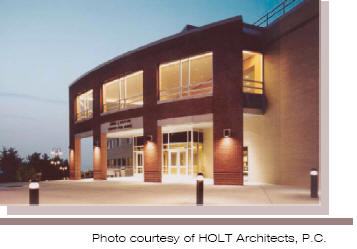 |
 |
|
|
REFLECTION It's over. In developing a unique solution to the problem at hand I found that no matter how much work I though I had done, I had not done enough. The design always has room for improvement, and if you truly care about your design, you will be constantly thinking about it, and how to improve it. I finally found that the only way to complete thesis is to set goals for yourself and once they are achieved you just have to stop. I found that no matter how much work I tried to get done early in the semester I still pulled 4 or 5 all-nighters. Even with the warnings from thesis classes past, it is just too tempting to procrastinate. Like a great poster on the wall in the thesis lab says, "Hard work often pays off over time, but laziness pays off right now." I tried to avoid that mentality by doing work early in the semester, but as soon as I returned to campus after spring break, I realized just how much laid ahead of me. In thesis, we have to prepare a "report" and a "presentation" and even though it took hundreds of hours of work to create the report I feel like I have been judged solely by the contents of my 14 minute presentation. There is no way any student can present the entire contents of their thesis during 14 minutes. There is no way the thesis faculty advisors will ever read our entire thesis reports. There is just something discouraging about producing work that will likely never be read. For me, I found that thesis is an exercise in stress management, not engineering. I didn't learn anything about lighting design in the preparation of my thesis, it was simply time-constrained application of skills learned elsewhere in the AE curriculum. Now that thesis is over I feel that the CPEP website is a good idea for documenting and preserving my thesis. But through the year, I was very hesitant about sending people to my CPEP website because it was incomplete, and most people would not understand the process which we create and manage the CPEP. Only in the last week have I sent the address to my family and professional contacts. I never used the e-Studio Conference Room to seek advice, nor did I read a single message to see what advice other lighting students were seeking. The CPEP is a great way for current peers and future thesis students to see what kind of work is expected in thesis. It is unfortunately also a great way for current peers and future thesis students to "borrow" intellectual property. Even though some of the above statements may sound negative, my overall attitude towards thesis is not. I will be a better professional for having completed thesis. The department has only good intentions in their application of thesis. Thesis is something different for each individual student, and what I took from thesis may or may not be what the department had intended. It doesn't really feel any different. Nothing seems to have changed. But it's over.
I will forever be in debt to two individuals for making my last few years as an Architectural Engineering student so special; Dr. Richard Mistrick Kathryn Trail Thanks to my thesis advisor, Dr. Martin Moeck, for coming to my presentation. Oh wait, he didn't come.
Please Note: While great efforts have been taken to provide accurate and complete information on the pages of this CPEP, please be aware that the information contained herewith is considered a work-in-progress for this thesis project. Modifications and changes related to the original building designs and construction methodologies for this senior thesis project are solely the interpretation of Benjamin Hagan. Changes and discrepancies in no way imply that the original design contained errors or was flawed. Differing assumptions, code references, requirements, and methodologies have been incorporated into this thesis project; therefore, investigation results may vary from the original design. This page was last updated
04/20/2004 |